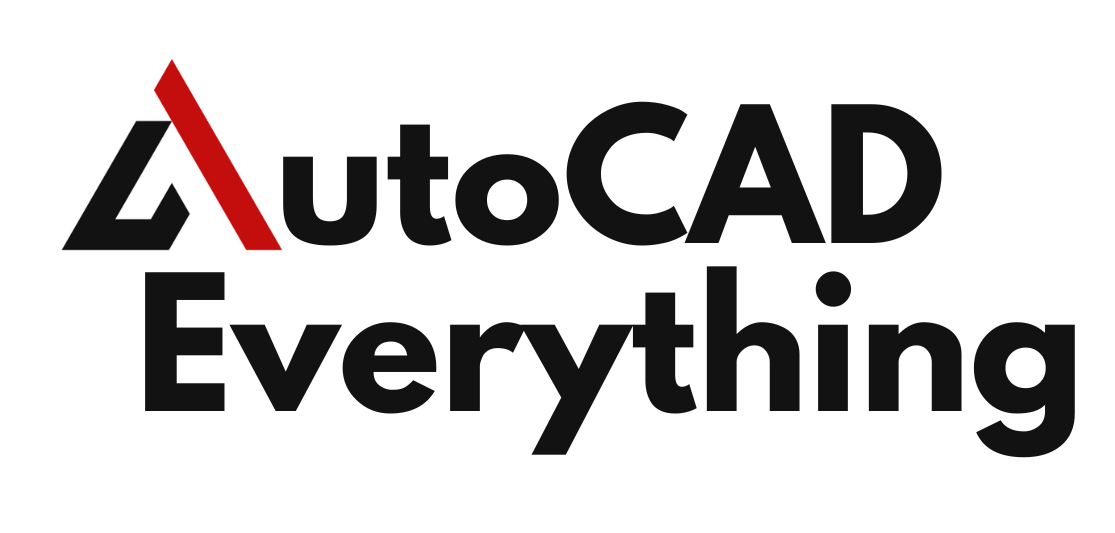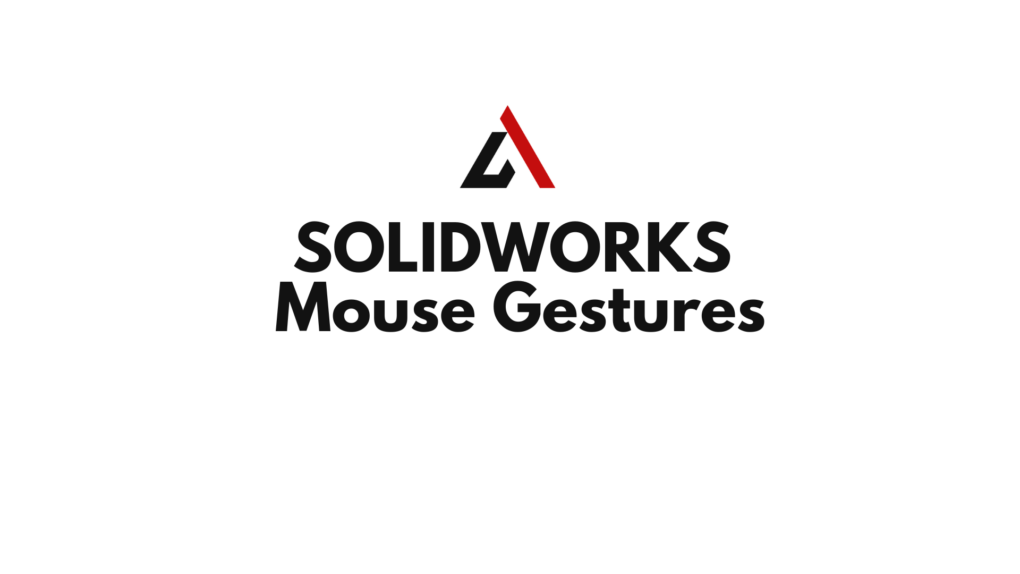In the intricate world of 3D CAD, every second counts. Designers and engineers are constantly seeking ways to optimize their workflow, reduce repetitive actions, and ultimately bring their innovative ideas to life faster. While SolidWorks is renowned for its comprehensive feature set and intuitive interface, one of its most powerful yet often underutilized tools for accelerating design is Mouse Gestures.
SolidWorks Mouse Gestures provide a dynamic and highly efficient way to execute commands, offering a significant departure from traditional toolbar clicks and menu navigations. By simply holding down the right mouse button and dragging in a specific direction, users can trigger a predefined command, transforming common actions into fluid, instantaneous motions. This seemingly small feature, when mastered, can dramatically reduce mouse travel, minimize interruptions to the design flow, and ultimately boost productivity to unprecedented levels.
Table of Contents
The Philosophy Behind Mouse Gestures: Why They Work
The core philosophy behind mouse gestures is rooted in the principles of ergonomics and cognitive load reduction. Traditional CAD interfaces, while robust, often require users to move their cursor across significant distances to access various tools. This constant back-and-forth, coupled with the cognitive effort of locating specific icons or menu items, can lead to fatigue and a slower design process.

Mouse gestures, conversely, leverage muscle memory and spatial recognition. Once a user associates a specific gesture (e.g., dragging right for “Extrude”) with a command, the action becomes almost subconscious. The eyes remain focused on the design area, and the hand executes the command with minimal conscious thought. This leads to a more fluid, immersive, and less fatiguing design experience.
Furthermore, mouse gestures are highly customizable. SolidWorks allows users to define their own sets of gestures for different environments (Part, Assembly, Drawing, Sketch), ensuring that the most frequently used commands are always just a flick of the wrist away. This personalization is key to maximizing their effectiveness for individual users and their specific design habits.
A Deeper Dive: How Mouse Gestures Function
At its simplest, SolidWorks Mouse Gestures operate by recognizing directional drags. When you hold down the right mouse button, a visual guide (a circle with four or eight segments, depending on your settings) appears around your cursor. As you drag the mouse in one of the predefined directions, the corresponding command is highlighted. Releasing the right mouse button executes that command.
Customization is King: The true power of mouse gestures lies in their customizability. Users can access the Mouse Gestures settings through Tools > Customize > Mouse Gestures. Here, you’ll find a list of all available SolidWorks commands, categorized by environment. For each environment (Part, Assembly, Drawing, Sketch), you can assign up to eight different commands to the four cardinal directions (Up, Down, Left, Right) and the four diagonal directions (Up-Left, Up-Right, Down-Left, Down-Right).
Understanding the 4-Gesture vs. 8-Gesture Setting:
- 4-Gesture: This is the default setting and offers a simpler, less cluttered experience, ideal for beginners. It assigns commands only to the cardinal directions. While easier to learn, it limits the number of instantly accessible commands.
- 8-Gesture: This setting unlocks the full potential of mouse gestures, allowing you to assign commands to all eight directions. While it requires a slightly steeper learning curve initially, the benefit of having twice as many commands at your fingertips far outweighs the effort for experienced users. Most power users quickly graduate to the 8-gesture setup.
Best Practices for Customization:
- Frequency of Use: Prioritize commands you use most often. For instance, in a Part environment, “Extrude Boss/Base,” “Cut Extrude,” “Fillet,” and “Chamfer” are prime candidates.
- Logical Grouping: Try to group related commands logically. For example, all sketch-related commands might be on the left side, and feature commands on the right.
- Consistency Across Environments: Where possible, maintain consistency for common actions across different environments. For example, “Save” could always be the “Up” gesture, regardless of whether you’re in a Part, Assembly, or Drawing.
- Experimentation: Don’t be afraid to experiment with different configurations. What works for one user might not work for another. The goal is to find a setup that feels natural and intuitive to you.
Unleashing Efficiency: Practical Applications and Examples
Let’s explore how mouse gestures can revolutionize common SolidWorks workflows:
1. Sketching:
- Lines & Circles: Instead of going to the Sketch toolbar, a quick gesture can activate the line or circle tool.
- Smart Dimension: This is an absolute must-have for a mouse gesture. Dimensioning is a constant action in sketching, and having it instantly accessible saves countless clicks.
- Trim Entities/Extend Entities: Efficiently clean up your sketches with a flick of the wrist.
- Exit Sketch: Crucial for quickly moving from sketch creation to feature creation.
Example 8-Gesture Sketch Setup:
- Up: Line
- Down: Smart Dimension
- Left: Circle
- Right: Extrude Boss/Base (or Cut Extrude, depending on primary use)
- Up-Left: Trim Entities
- Down-Left: Rectangle
- Up-Right: Centerline
- Down-Right: Exit Sketch
2. Part Modeling:
- Extrude Boss/Base & Cut Extrude: These are fundamental commands. Having them on a gesture is paramount for speed.
- Fillet & Chamfer: Frequently used for detailing parts.
- Revolve Boss/Base & Revolved Cut: For axisymmetric parts.
- Mirror: Quickly create symmetrical features.
- Hide/Show Bodies/Components: Rapidly toggle visibility during design review.
Example 8-Gesture Part Setup:
- Up: Extrude Boss/Base
- Down: Cut Extrude
- Left: Fillet
- Right: Chamfer
- Up-Left: Revolve Boss/Base
- Down-Left: Revolved Cut
- Up-Right: Mirror
- Down-Right: Hide/Show Component/Body
3. Assembly Modeling:
- Insert Component: The most common assembly operation.
- Mate: Crucial for defining relationships between components.
- Hide/Show Component: Essential for navigating complex assemblies.
- Isolate: Focus on specific components without clutter.
- New Component/Create Component: For top-down assembly design.
Example 8-Gesture Assembly Setup:
- Up: Insert Component
- Down: Mate
- Left: Hide Component
- Right: Show Component
- Up-Left: Isolate
- Down-Left: New Component
- Up-Right: Rebuild
- Down-Right: Save
4. Drawing:
- Model View: Place primary views quickly.
- Projected View: Generate orthographic views from an existing view.
- Smart Dimension: Just as important in drawings for annotation.
- Note: Add annotations and text.
- Center Mark/Centerline: For detailing holes and cylindrical features.
Example 8-Gesture Drawing Setup:
- Up: Model View
- Down: Smart Dimension
- Left: Note
- Right: Projected View
- Up-Left: Center Mark
- Down-Left: Centerline
- Up-Right: Break View
- Down-Right: Save
Beyond the Basics: Advanced Tips for Mouse Gesture Mastery
While the initial setup is straightforward, truly mastering mouse gestures involves a few advanced considerations:
- Practice, Practice, Practice: Like learning any new skill, consistent practice is key. Force yourself to use gestures instead of toolbar clicks, even if it feels awkward at first. The muscle memory will build rapidly.
- Gesture Length: SolidWorks recognizes a gesture even with a very short drag. You don’t need to drag your mouse across the entire screen. A subtle flick is often enough.
- Visual Feedback: Pay attention to the visual feedback. The highlighted command in the gesture guide confirms that SolidWorks recognizes your intended action.
- Contextual Sensitivity: Remember that gestures are context-sensitive. A “Right” gesture in a Part environment might mean “Chamfer,” while in a Sketch, it might mean “Exit Sketch.” This intelligent design prevents accidental execution of irrelevant commands.
- Combining with Keyboard Shortcuts: Mouse gestures are an excellent complement to existing keyboard shortcuts. For example, you might use a gesture to activate the “Line” command, and then use the “A” key to toggle between line and arc creation while sketching.
- Training New Users: When introducing SolidWorks to new users, emphasize mouse gestures from the beginning. It can seem daunting at first, but it establishes efficient habits early on.
- Review and Refine: Periodically review your mouse gesture assignments. As your design habits evolve, so too should your gesture setup. Remove commands you rarely use and replace them with more frequent ones.
- Consider a Multi-Button Mouse: While a standard two-button mouse is sufficient, a mouse with extra programmable buttons can further enhance efficiency by assigning macros or other SolidWorks commands to those buttons, working in conjunction with gestures.
The Impact on Productivity: Quantifying the Gains
The benefits of integrating mouse gestures into your SolidWorks workflow are not merely anecdotal; they translate into tangible productivity gains:
- Reduced Mouse Travel: Eliminates the need to constantly move the cursor from the design area to toolbars and menus. This is particularly significant on large monitors or multi-monitor setups.
- Faster Command Execution: Commands are executed almost instantaneously, saving seconds on each action. Over a full day of design, these saved seconds accumulate into significant time savings.
- Improved Focus and Flow: By keeping your eyes on the design and your hands actively engaged in the creation process, you maintain a state of “flow,” leading to greater concentration and fewer distractions.
- Reduced Strain: Less repetitive clicking and extensive mouse travel can reduce the risk of repetitive strain injuries (RSIs) over time.
- Enhanced User Experience: A more fluid and responsive interface makes SolidWorks more enjoyable to use, fostering a positive design environment.
Consider a simple part design: sketching a profile, extruding it, adding a fillet, and then cutting a hole. Without gestures, this might involve four distinct movements to different toolbars. With gestures, it’s four quick flicks of the wrist, with the cursor barely leaving the design area. Multiply this by hundreds of operations in a complex assembly, and the time savings become substantial.
Also Read – SolidWorks Keyboard Shortcut
Potential Challenges and How to Overcome Them
While the advantages are clear, new users might encounter a few initial challenges:
- Learning Curve: Memorizing eight gestures per environment can take time. Start with the 4-gesture setup and gradually move to 8 once you’re comfortable. Focus on learning gestures for your most frequent commands first.
- Accidental Activation: Initially, you might accidentally trigger the wrong command. This diminishes rapidly with practice as your muscle memory becomes more precise.
- Conflicting Habits: If you’re a long-time SolidWorks user accustomed to toolbar clicks, breaking old habits can be difficult. Persistence is key.
Tips for Overcoming Challenges:
- Sticky Notes: For the first few days, a small sticky note near your monitor listing your assigned gestures can be a helpful reminder.
- Visual Cues: Pay attention to the gesture guide that appears. It’s there to help you.
- Start Small: Don’t try to customize every single gesture on day one. Pick a few core commands in your primary environment and master those before expanding.
Conclusion
SolidWorks Mouse Gestures are far more than a mere convenience; they are a fundamental tool for maximizing efficiency and streamlining the design process. By transforming common command executions into intuitive, fluid motions, they empower users to work faster, stay focused, and ultimately unleash their full creative potential within the SolidWorks environment. If you’re not already leveraging the power of mouse gestures, now is the time to explore this often-overlooked feature. Invest a small amount of time in customization and practice, and you’ll soon discover a newfound speed and fluidity in your SolidWorks workflow that will significantly impact your productivity and enjoyment of the design process. Embrace the gestures, and watch your designs come to life with unprecedented speed.

